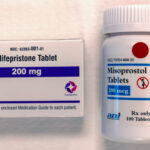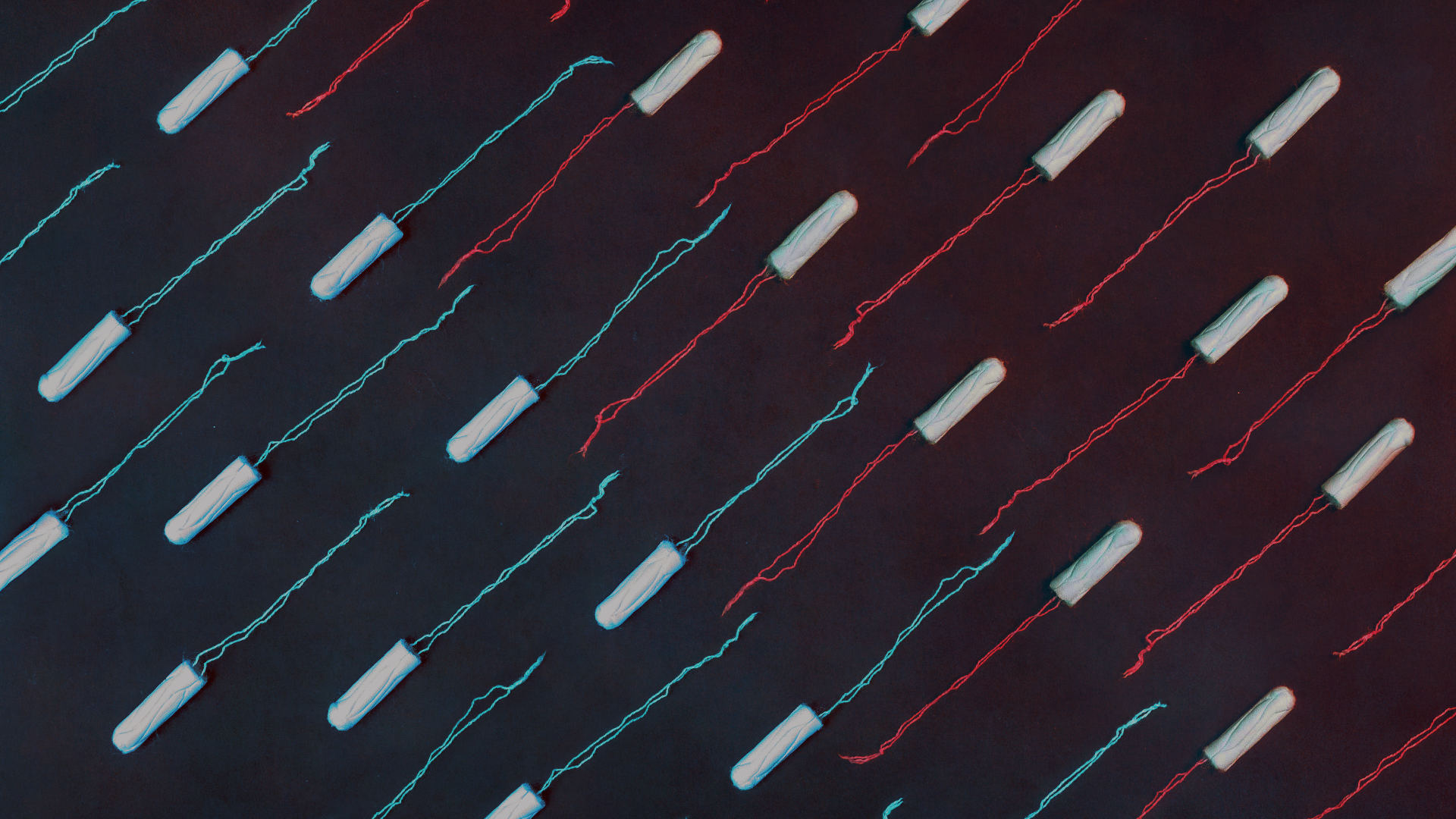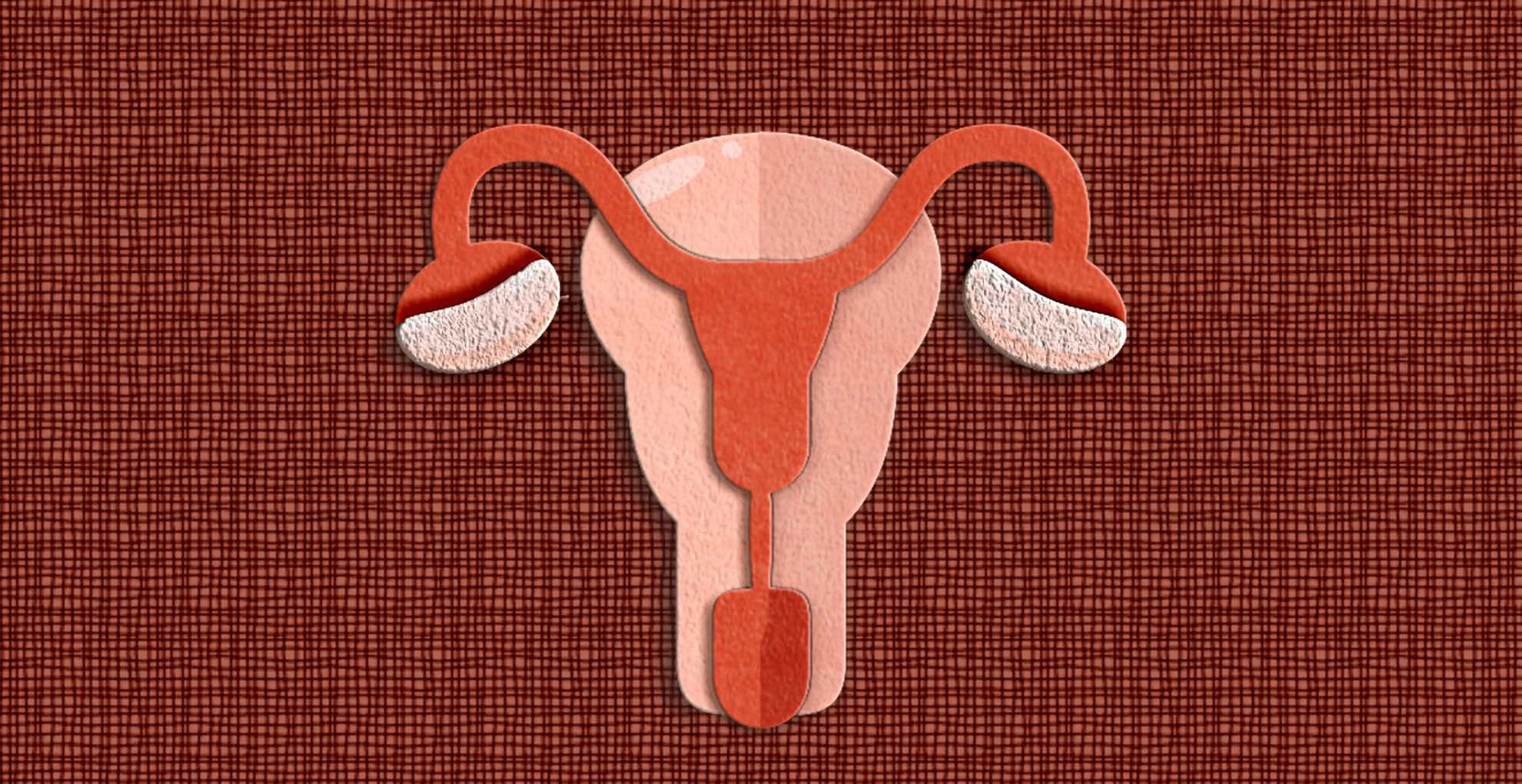In Turmoil Over Tampons, Scientists See a Need for More Study
This past August, a video about titanium dioxide in tampons went viral on TikTok. A blonde woman holding a large box of tampons suggested that the mineral’s presence in the products could cause period cramps, ovarian cysts, irreversible uterine damage, and even cancer.
Research conducted on rats has found that titanium dioxide is harmful if inhaled in large quantities, and the European Union has banned the mineral as a food additive over possible health concerns. But in the U.S., regulators maintain that its use in food and personal care products is safe. In response to the TikTok turmoil, doctors and journalists at major outlets — including USA Today, Gizmodo, and CBS News — as well as health and wellness websites, jumped in to dispel the tampon rumors. “Titanium dioxide isn’t making tampons into toxic death sticks,” wrote OB/GYN Jen Gunter on her popular women’s health Substack, The Vajenda.
But the fracas raised a real issue: Serious questions about tampon ingredients remain. The few scientists who have studied the subject have identified potentially toxic compounds in some menstrual products. Yet companies are not legally required to divulge their ingredients to U.S. customers. And even if brands do provide a list, there is not a lot of conclusive research to help consumers understand what the presence of substances such as microplastics or phthalates actually means for the user’s health.
Researchers who spoke with Undark emphasized that there’s little evidence to suggest tampons cause harm when used as directed. At the same time, the researchers noted, it’s fair for laypeople to wonder what’s in their menstrual products, particularly given that some scientists are asking similar questions.
“Knowing what ingredients are in there, and what the implications might be, and what they might do to your body — I think that should be just a starting point,” said Inga Winkler, an associate professor at the Central European University in Vienna who has studied menstrual health as a human rights issue. “And the fact that we are fighting about this, I mean, it’s a really sad starting point.”
About a decade ago, Marianthi-Anna Kioumourtzoglou was chatting with two other researchers about the possible presence of pesticides in the military’s cotton uniforms when she remembered it was time to change her tampon. In the bathroom, Kioumourtzoglou made a connection between that discussion and her personal life. “Tampons have cotton. Cotton has pesticides. What did I just put inside me?” she wondered. Kioumourtzoglou walked back to the conversation and asked: “Have you ever heard about what’s in tampons?”
Kioumourtzoglou, who is trained as an air pollution epidemiologist, was especially interested in a pesticide called glyphosate, which farmers often spray on cotton plants. The United States Environmental Protection Agency says that when properly used, glyphosate poses “no risks of concern to human health.” But in 2015, the International Agency for Research on Cancer, part of the World Health Organization, classified the chemical as “probably carcinogenic” based on limited evidence in humans, but sufficient evidence in experimental animals. These mixed conclusions — combined with the cotton plant’s ability to absorb heavy metals — led Kioumourtzoglou to wonder if pesticides — particularly glyphosate — in cotton fibers can make it through the tampon manufacturing process. Now an associate professor of environmental health sciences at Columbia University’s Mailman School of Public Health, she recalls feeling frustrated when she searched for answers, and nothing turned up.
To really get at the heart of the matter, Kioumourtzoglou said, researchers need to ask a series of questions: First, are there any harmful chemicals in tampons — and at what levels? Second, can these chemicals leach out of the tampons and be absorbed into the body? Finally, if absorbed, do they have any adverse health effects?
The first question calls for basic research that involves taking tampons apart to understand what’s in the cotton stuffing. Over the past couple of decades, a handful of scientists have attempted do this. Their results suggest that many tampon brands do contain potentially toxic substances, though generally at very low levels.
One early study, published in 2002, calculated the concentration of dioxins in four brands of tampons. Dioxins are a byproduct from the process of whitening rayon, a semisynthetic fiber added to some tampons to increase their absorbency. According to the EPA and the U.S. Food and Drug Administration, long-term exposure to dioxin levels above a certain threshold can impact reproductive health and lead to birth defects, among other issues. The study found trace amounts of dioxins in all of the tampons, but at levels much lower than dietary exposure. These results were replicated in a 2005 study.
In 2020, a separate research group looked into a class of chemicals called volatile organic compounds, or VOCs, which are often used to make paint thinners, petroleum fuels, and household cleaning products. Manufacturers add these to tampons for practical reasons: They can absorb and block moisture and mask odor. The researchers, based at the University of Michigan, looked for VOCs in 79 period products sold in the United States, including 22 kinds of tampons as well as pads, wipes, sprays, powders, and moisturizers. All of the products contained some VOCs, and those labeled “organic” did not necessarily have lower concentrations. The researchers noted that the concentrations of VOCs were generally low and did not exceed health protective guidelines. Nevertheless, they wrote, “We recommend the elimination of toxic ingredients and the disclosure of all chemicals that are used in these products.”
Researchers have also looked for compounds that are thought to disrupt hormones, such as phthalates, which increase plastics’ flexibility and might have made their way into tampons during the production process. A 2020 study sampled 12 tampons and found phthalates in all of them. Although the levels were below the threshold for toxic effects from exposure through the skin, the researchers noted that the rates of absorption through the vulva and vagina specifically are not known. Still, they identified tampons and other menstrual products as “an important source of chemical exposure in women.”
To better understand whether a given chemical poses a health risk, researchers study exposure routes, the pathways through which a chemical can enter the body and travel to different organs. There are thought to be three main routes of entry into the body: breathing, ingestion, and direct contact with the skin. “The skin is designed to protect the body, and the general assumption is that not many things are able to go through the skin,” said Oddny Ragnarsdottir, a Ph.D. student at the University of Birmingham who studies dermal absorption of polyfluoroalkyl substances, or PFAS. But tampons don’t sit flush against the skin; rather, they fit snuggly within the vagina.
Research on vaginal drug delivery has shown that the vaginal canal offers a suitable environment for chemical absorption and circulation. The canal is rich in arteries and lymphatic vessels. And vaginal mucus is sticky, so it holds some molecules against the vaginal wall for a long time; this forced proximity can stimulate absorption. Conditions may change over time, however, as the vaginal environment is dynamic. The qualities that facilitate absorption — such as pH level, temperature, mucus production, and vaginal wall thickness — may vary depending on a person’s age, health, sexual activity, and where they are in their menstrual cycle.
This ever-changing environment poses a challenge for scientists who want to understand precisely what happens to a tampon when it’s placed inside the vagina and how much of a given toxin is absorbed by the body. Broadly speaking, researchers can choose from two clinical approaches. The first approach, in vivo — Latin for “in a living organism” — often entails studying animals because of the technical and ethical complications of conducting research on human subjects. Researchers in the field tend to design studies that are in vitro — Latin for “outside of a living organism.” These studies minimize the messy distractions of the whole organism while isolating specific bodily conditions.
One such study was conducted by Leonardo Pantoja, a researcher at Middlesex University in London. Pantoja’s team used a setup called the “Syngina” to identify release of microplastics from tampons. The Syngina releases a saline solution at the average rate of menstrual flow until a tampon leaks; manufacturers have used the apparatus since the 1980s to test tampons’ absorbency. The results of Pantoja’s study, published in 2021, found billions of nanoplastic particles released from tampons that would be in contact with the vaginal wall. The fibers in many tampons are not woven, Pantoja explained, which facilitates the process of releasing nanoplastics. Given differences in friction and vaginal pressure, Pantoja suspects that his study may have underestimated the release of microplastics. Pantoja explained that it was his team’s intention to examine the least harsh conditions so as not to exaggerate the possible health implications of their findings.
Outside of the laboratory, researchers can also conduct epidemiological studies that gather data about adverse health effects. Kioumourtzoglou co-authored an academic article that found higher levels of mercury in the blood of tampon users, using data from the BioCycle Study. The BioCycle study — a longitudinal cohort study conducted at the University of Buffalo in the 2000s — was not designed to examine the effects of tampon use, but instead followed 250 women for two menstrual cycles to understand the relationship between hormone levels and oxidative stress, a state of chemical imbalance that can eventually lead to disease. Kioumourtzoglou and her co-authors got access to the data and looked for a link between participants’ tampon use and levels of heavy metals in their blood.
There were no statistically significant findings about mercury and other metals, but Kioumourtzoglou explained that the very small sample size could have contributed to this.
Like all studies, this one had limitations. For example, participants self-reported details about their tampon use. And the BioCycle study didn’t check participants’ blood for glyphosate, leaving Kioumourtzoglou without an answer to her question. But in finding an association between reported tampon use and oxidative stress — even one that is not statistically significant — the study can be used to attract funding for further research, said Kioumourtzoglou.
A demonstration of the Syngina, an apparatus that’s been used by manufacturers since the 1980s to test the absorbency of tampons. A test liquid is added to the top of the tampon, and when it flows out of the other side the test is complete.
Visual: SGS/YouTube
Recently, she and team of researchers received $35,000 for a small pilot study to analyze popular brands of tampons for the presence of certain pesticides and metals. Once the team has recorded concentrations of these contaminants in the tampons, they will place the products in samples of menstrual blood provided by study volunteers. The goal, explained Kioumourtzoglou, is to see if any potentially harmful chemicals leach out of the tampon into the surrounding blood.
She hopes the broader community of scientists will also pursue studies about menstrual products. “The more people who work on it,” she said, “the better.”
Women and teenage girls need access to period products, according to public health experts who have sought to draw attention to period poverty — a term used to describe the inability to afford or otherwise access menstrual products. Globally, period poverty, combined with stigma associating periods with uncleanliness, has caused youth to miss school, and it has also kept adults from fully participating the workforce.
Stigma might also influence the health care guidance that physicians and nurses offer patients in the clinic. Some health care providers are not sufficiently trained on the substantive issues, said Winkler, the professor at Central European University. And they might not take their patients’ concerns seriously. “People are constantly being told that it’s all just in their head,” said Winkler. Better sex education could contribute to menstrual literacy, she continued, enabling people to make autonomous, informed choices about their body.
But comprehensive sex education may not be enough, given the murkiness surrounding what’s actually in tampons. The FDA regulates these and other menstrual products as medical devices, which comes with little government oversight for ingredient disclosure. As of 2022, New York is the only state in the U.S. that requires manufacturers to list all ingredients in period products on the packaging. (Although the New York law only applies to products sold within the state, the rule appears to have a ripple effect on products sold in other states.) But even with regulation of ingredient disclosure, Pantoja explained that the meaning of terms like “organic” or “pure” are not standardized.

A video about titanium dioxide in tampons has attracted 1.5 million likes and more than 100,000 shares on TikTok. Fears about the mineral are not backed by evidence, but tampon ingredients are being scrutinized by scientists.
Visual: @rachelmorgann__/ TikTok
This summer’s viral TikTok on titanium dioxide in tampons focused on the brand This is L., which was acquired by Procter and Gamble in 2019. This is L. tampons are labeled as being made with organic cotton, and the company’s marketing promises a simple product: “Only the ingredients you need for the confidence, comfort, and protection you deserve. Nothing more, nothing less. Period.” On Aug. 31, consumers filed a class action suit against This is L., for what they see as misleading marketing. An L. representative did not have answers and P&G did not respond to requests for comments about when, how, and why titanium dioxide is used in tampon production.
A range of products have grown in popularity as alternatives to single-use tampons and pads, including menstrual cups and period underwear containing moisture-wicking fabric. These products are not exactly silver bullets, though, and issues with brand transparency and regulation are also at play. Menstrual cups are, like tampons, regulated by the FDA as medical devices, meaning the constitutive ingredients of materials like medical-grade silicone do not need to be listed. They have gotten lodged in women’s uteruses and been linked to toxic shock syndrome (though a 2019 study found only 25 reports of adverse effects out of more than 1,100 menstrual cup users).
Knix Wear, a brand of period underwear, is facing a class action lawsuit, with consumers alleging that the presence of PFAS forever chemicals betrays the underwear’s marketing. Another brand, Thinx, is reportedly settling a similar lawsuit.
For women navigating the feminine hygiene aisle at the grocery store, it can be challenging to balance cost, chemicals, environmental sustainability, and comfort. But, being able to make those choices for yourself,” said Winkler, “I think that’s really key.”
Colleen Wood is a writer and educator based in New York City. Her work has appeared in The Diplomat, Foreign Policy, New Lines Magazine, and The Washington Post, among other outlets. Find her on Twitter @colleenwood_.












Comments are automatically closed one year after article publication. Archived comments are below.
Nature never intended menstrual blood to be retained in the body. Of course Tampons would do harm. If used rarely perhaps not, but regularly, then they must do harm. Nature and natural function is stupidly ignored in this age.
Apothercare has tested Titanium Dioxide on the 4 sentinel species of the vaginal microbiome. Our in vitro initial assessments show that titanium dioxide is not toxic to the beneficial species of the vaginal microbiome. We are undertaking further tests to discover the full implications of titanium dioxide and other chemicals commonly found in intimate care products.